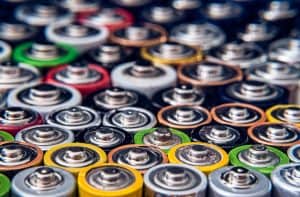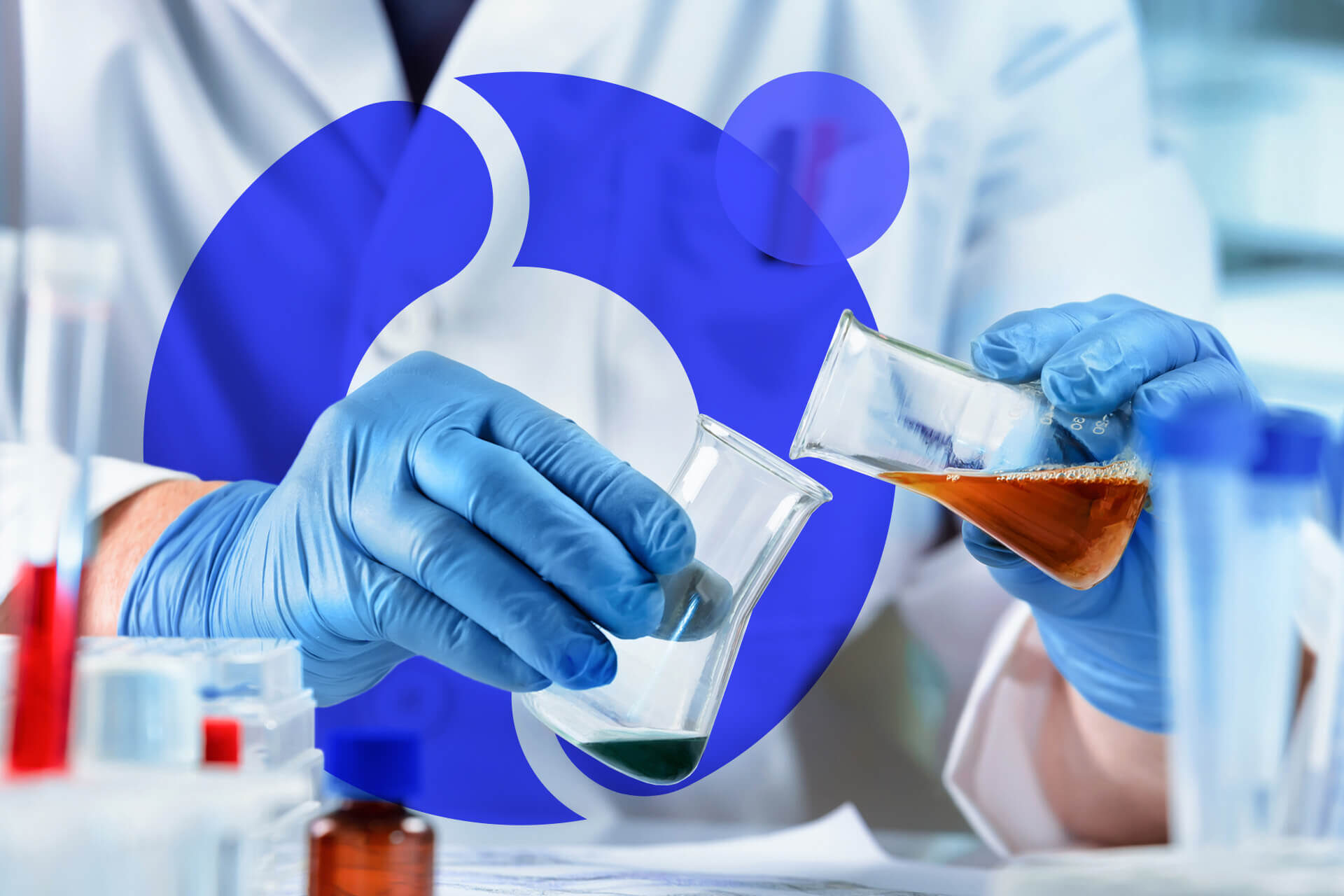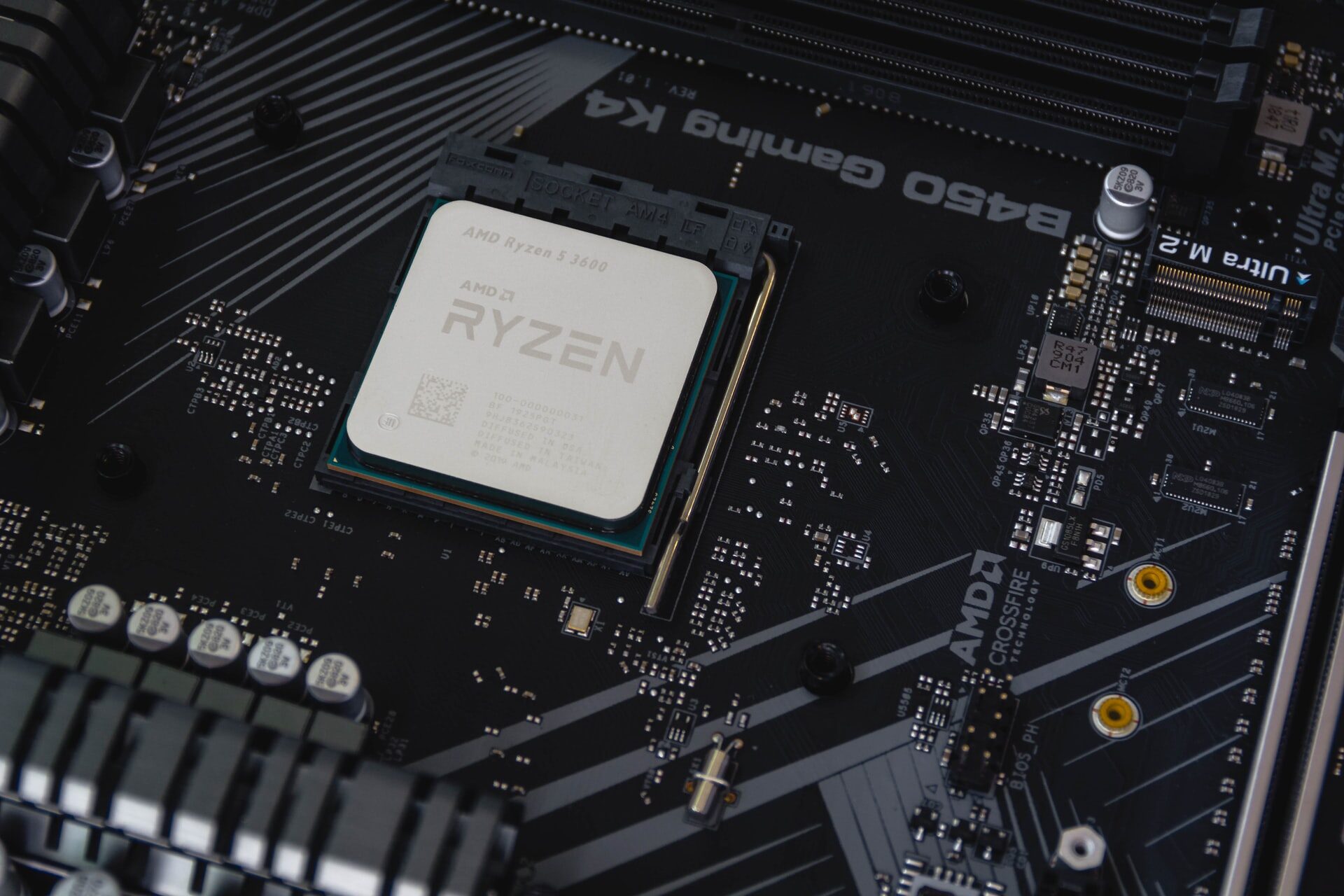
Everyday Uses of Transition Metals
July 29, 2020 - Emily Newton
Revolutionized is reader-supported. When you buy through links on our site, we may earn an affiliate commision. Learn more here.
Our world is made primarily of metal. You encounter metals every single day, and chances are, the majority of the ones you encounter fall into the third category on the periodic table — the transition metals. What are transition metals, and where might you encounter them in your daily life?
Properties of the Transition Metals
First, what are transition metals? There are a lot of elements in this section. Transition metals consist of groups 3 through 12 on the periodic table. This makes of 38 elements in total. We’ll go more into each element in detail in a moment. The transition metals include:
| Period 4 | Period 5 | Period 6 | Period 7 |
|---|---|---|---|
| Scandium | Yttrium | Hafnium | Rutherfordium |
| Titanium | Zirconium | Tantalum | Dubnium |
| Vanadium | Niobium | Tungsten | Seaborgium |
| Chromium | Molybdenum | Rhenium | Bohrium |
| Manganese | Technetium | Osmium | Hassium |
| Iron | Ruthenium | Iridium | Meitnerium |
| Cobalt | Rhodium | Platinum | Darmstadtium |
| Nickel | Palladium | Gold | Roentgenium |
| Copper | Silver | Mercury | Copernicium |
| Zinc | Cadmium |
These metals are considered the transition or bridge between the main group elements on either side of the table. They create a bridge between the alkali metals and alkaline earth metals on the left side of the table, known as active metals, and the metals, semimetals and nonmetals on the right-hand side of the table.
These metals earned their moniker in 1921 when they were dubbed the transition series of elements by an English chemist named Charles Bury.
The International Union of Pure and Applied Chemistry (IUPAC) defines these transition metals as “any element with a partially filled d-electron sub-shell.” Elements are divided into and defined by one of four different electron orbitals – designated s, p, d and f – and the latter three also have sub-levels or sub-shells that can hold even more electrons. The orbital designation helps chemists determine where each element falls on the periodic table.
As you move across the periodic table from left to right, these sub-shells become progressively more filled.
Essential for Life
One unique property of these transition metals is the fact that they’re essential for biological life to function. Many of them, from iron and cobalt to copper and things like molybdenum are necessary to keep us alive and healthy. Without enough iron in your bloodstream, your body can’t property transport oxygen through your body. Other transition metals, like copper and cobalt, exist as trace elements in your body, and the full extent of their applications isn’t entirely understood.
There are two other categories — lanthanides and actinides — which reside on the bottom part of the periodic table. People sometimes refer to them as the inner transition metals since their atomic numbers fall between the first and second elements on the last two rows of transition metals. However, we’ll get into those at a later date.
Chemical and Physical Traits
All these elements are metals, meaning they’re shiny in appearance, exhibiting the telltale metallic luster that defines them as metals. Most of them are very hard. They typically have melting points and boiling points so high it’s nearly impossible to reach them. Almost all of them are good at conducting both heat and electricity, making them useful for a variety of applications.
Malleability
They’re usually incredibly malleable, though some require very high temperatures to make them malleable enough to work with. Many of these metals, such as iron and copper, also have useful structural properties. They are able to bend and be reshaped without losing their structural integrity and strength. While you can take a piece of iron or copper and bend it back and forth over and over to weaken its bonds or cause it to break, under most applications, these metals retain their structural integrity regardless of their shape.
Alloys
The most common use for the metals in periods 4, 5 and 6 is in alloys, which makes them incredibly versatile. Alloys are mixtures of two or more metals to make the finished product stronger, lighter or easier to work with.
Losing Electrons
These metals, on the atomic level, tend to lose electrons when bonding. This causes them to create positive ions.
Bright Colors
These metals also often form colored complexes, which means that if you find them in different compounds or solutions, they might be very colorful. A few examples of this include malachite which is a bright green, azurite which usually appears as a brilliant blue, and proustite, which is a deep red.
Reactivity
Some of the metals in this category are reactive, but they don’t react nearly as quickly or as violently as those in the alkali metals category.
Different Oxidation States
Their partially filled electron sub-shells also mean these metals can exhibit multiple different oxidation states, usually separated by a single electron. These varying oxidation states make most transition metals paramagnetic as well — they demonstrate weak magnetic attraction but won’t retain any sort of permanent magnetism. We say most, because there are at least three metals in this category that are considered ferrous, so they are magnetic and react strongly to magnetic fields.
High Catalytic Activity
Transition metals also demonstrate high catalytic activity. In other words, the elements in this section, as well as their compounds, act as good catalysts. They will either react with something, changing their oxidation state in the process, or they will absorb substances that sit on their surface, activating them. Catalysts work by creating catalytic pathways for a reaction to follow. These metals are more than happy to take on new electrons or donate the ones they already have to fuel these reactions.
Abundance
Many of the transition metals are among the most abundant elements on Earth. Iron is the fourth most abundant. Titanium comes in 10th and manganese comes in 13th. Other transitional metals, like gold and silver, are also abundant, but they don’t rank nearly as high as those previously mentioned.
There are no official families for the members of the transition metals, but people often give them unofficial designations, especially for the most commonly used ones. Let’s take a look at the most common designations for transition metal groups and where you might encounter them in real life.
Real-Life Applications
It can be hard to break down some of these elements because not all of them have common applications. Let’s look at some of the unofficial group designations for commonly used transition metals.
Ferrous or Magnetic Metals
Ferrous metals are those that react with a magnetic field. It’s why you can stick a magnet to a steel refrigerator but not an aluminum car bumper. These metals include the following elements.
Iron
Iron is easily one of the most recognizable elements on the periodic table. Human beings have been using iron in its various forms for more than 5,000 years. We could write an entire article on just iron and its different uses. Here are a few applications you might encounter during your daily life.
Uses for Iron
- Steel:Mix iron with manganese and chromium — both also transition metals — and you get steel. This alloy is the backbone of much of our global infrastructure. Steel appears in everything from construction to cars and aircraft, just to name a few.
- Hemoglobin: You’ve also got iron in your blood, in the form of hemoglobin. These cells transport oxygen from the lungs to your organs and tissues, then carry carbon dioxide back to the lungs so you can exhale it.
- Cooking: You can’t go wrong with a cast-iron skillet. Mixing iron with carbon or silicon gets you cast iron, a popular choice for decor and cooking implements.
Cobalt
Cobalt gets its name from the German word kobald, which refers to an underground gnome that likes to cause trouble. German miners named it after this mischievous little gnome because it’s incredibly difficult to mine. In its elemental form, cobalt is a brilliant blue color, but it also contains arsenic, making it incredibly toxic. What are some typical uses for cobalt?
Uses for Colbalt
- Paint, ink and pigments: That brilliant cobalt blue made the element incredibly popular with artists after its discovery. It is still used today, though it’s carefully processed to remove any lingering arsenic, making it safer to work with.
- Rechargeable batteries: Many modern electronics rely on rechargeable batteries, and those batteries depend on cobalt. More than 50% of the global cobalt supply ends up in rechargeable batteries.
- Alloys: Engineers and metal workers can alloy cobalt with various metals, improving magnetism and strength, as well as reducing corrosion.
Nickel
Nickle is another metal that used to give miners fits. In the ground, it’s a copper lookalike, leading German miners to name it Kupfernickel, meaning “imp copper.” It may have been used in the coin that shares its name in the past, but there isn’t any nickel in those 5-cent pieces anymore.
Uses for Nickel
- Alloys: Nickel alloys well with everything from steel and iron to copper, chromium, cobalt and most other transition metals.
- Anti-corrosion coatings: If you’ve ever seen anything with the label “nickel-plated,” then you’ve seen an example of this application. Nickel is naturally non-corrosive, making a great coating for metals that might otherwise oxidize in the presence of oxygen.
- Batteries: Nickel is a primary component in rechargeable batteries. Look for ones marked NiMH, or nickel-metal hydride.
Coinage Metals
As the name suggests, people either used these metals in coins in the past or still use them in currency today.
Gold
Does this metal need a description? We’ve used gold for coins and jewelry for centuries. The United States even used the gold standard to support its currency until the 1930s. The federal government maintains massive stores of gold bullion to this day.This metal is soft and malleable. You can hammer 1 troy ounce into a sheet that will stretch more than 68 square feet. You can shape gold into nearly anything. What are some common applications beyond jewelry and coins? Let’s take a look at it’s different applications.
Uses for Gold
- Electronics: Gold is incredibly conductive and corrosion-resistant, creating all sorts of applications in the electronics industry. You’ll find it in things like the pins on a central processing unit (CPU) and printed circuit boards.
- Dentistry: Gold is one of the most non-reactive metals on our list. It doesn’t react to water or acids, making it the perfect metal for fillings and crowns in dentistry.
- Food: Believe it or not, you can actually eat gold. Gold leaf — pounded incredibly thin — is a popular garnish for expensive dishes.
Silver
Silver is another metal that is incredibly popular for both coins and jewelry. It isn’t as malleable as gold, but you can melt it down and cast it into nearly any shape. It also isn’t as valuable as gold because it’s more abundant, but that doesn’t stop it from being incredibly popular as an accessory. Here are some interesting ways we utilize silver.
Uses for Silver
- Electronics: Silver is one of the best metals for electronics because of its high thermal and electrical conductivity levels. It works so well that it’s nearly impossible to replace it with less expensive metals.
- Photography: While most of the world has transitioned to digital photography, there are still some traditionalists that prefer film. Silver halide crystals in the film are sensitive to light, and they record an image so the photographer can develop it later.
- Anti-microbial coatings: Silver absorbs oxygen, which kills any bacteria that come into contact with its surface, making it a fantastic anti-microbial substance. It’s even used in wound dressing and ointments for treating burns.
Copper
When you think of copper, most people picture pennies, but it’s been a long time since the U.S. penny had any copper in it. Today, these 1-cent pieces are made from zinc with a thin coating of copper on the surface to retain the color. This turned out to be a good thing because there are so many different applications for copper that we couldn’t possibly list them all.
Uses for Copper
- Electronics: Copper’s conductivity is unrivaled by nearly any of the other metals on this list. It’s also malleable and easy to draw into wire, so you’ll often find it in everything from electronics to the wiring in your walls.
- Statues: Copper turns greenish-blue when it oxidizes. Do you know what else is greenish-blue? The Statue of Liberty. One of the country’s most famous statues is made from copper.
- Cooking: Copper also conducts heat very well, making it a popular choice for cooking utensils and cookware.
Alloy Metals
Alloy metals are essential to most modern construction, simply because of their abundance and frequent use in contemporary projects. Eleven of them make up this group because they’re often found together in nature. Let’s take a brief look at these metals.
Titanium
Titanium gets its name from the Titans of Greek mythology, which is due to its incredible strength. Miners discovered it in the 1700s but weren’t able to isolate and use it until 1910. Once they achieved this, it became useful for a range of applications.
Uses for Titanium
- Construction: Titanium is an integral part of modern construction because it’s both strong and lightweight, enabling us to create massive high rises and elaborate structures that would be impossible with steel.
- Cars and airplanes: The lightweight strength of titanium makes it a popular choice when decreasing the overall weight of a structure during aircraft and automobile construction.
- Spacecraft: Launching rockets into space is expensive, so engineers are looking to cut weight wherever they can. Titanium is also corrosion-resistant and can withstand the harsh environments in orbit.
Zirconium
Scientists found zirconium inside the mineral zircon, which is also where it got its name. Scientists discovered zirconium around the same time they found titanium, but they weren’t able to isolate it until the early 1900s.
Uses for Zirconium
- Nuclear power: Zirconium doesn’t absorb neutrons well, so it’s often used in nuclear power plants as fuel element cladding.
- Superconducting magnets: At low temperatures, zirconium becomes a superconductor. When alloyed with niobium, it creates superconducting magnets.
- Furnace linings: Zirconium doesn’t transmit heat quickly, but it is resistant to heat shock, making it a popular choice for furnace linings and laboratory crucibles.
The rest of the alloy metals don’t have a ton of applications, but we’ve listed a few for you. You probably won’t encounter these in your everyday life, but they have their own places within inorganic chemistry:
- Hafnium: This metal is always found with and often impossible to separate from zirconium. It is used in lightbulb filaments.
- Chromium: Chromium is used for staining glass and chrome-treating metals. Vanadium: This element acts as a bonding agent when creating a steel and titanium alloy.
- Tantalum: This metal has a high melting point, which increases the melting point of any alloys it exists within.
- Niobium: Niobium is always found with and often impossible to separate from tantalum.
- Molybdenum: This metal strengthens tungsten alloys.
- Tungsten: This element has the highest melting point of any metal and is used to raise metal melting points. People occasionally use it to create jewelry.
- Manganese: Manganese increases metal strength during steelmaking.
- Rhenium: Rhenium makes tungsten alloys stronger.
If you’ve handled something made of tungsten, you’ve likely encountered most of the alloy metals in one place, including some inner transition metals. However, without breaking it down into its components, it’s impossible to tell.
The Zinc Family
People call the members of this category “the zinc family” because they occupy the same group on the periodic table. They do tend to demonstrate very different properties, though.
Zinc
If you encounter zinc in your daily life, it will usually be in one of its many alloys or compounds. By itself, zinc is just a silver-white metal that oxidizes easily. When you alloy it with other metals, its possibilities are endless.
Uses for Zinc
- Nutrition: Getting enough zinc in your diet is essential to creating a healthy lifestyle. Zinc naturally occurs in things like beef, sunflower seeds and cheese.
- Anti-corrosion coatings: Primarily, zinc is used to galvanize other metals that might otherwise be prone to corrosion. Galvanization prevents rusting, so you’ll find it in places where galvanized iron and steel are used for outdoor applications, such as on car bodies or bridges.
- Brass: Mixing zinc and copper creates brass. This metal is one of the earliest metal alloys, shaping humanity’s advancement and the modern world that we take for granted today.
Cadmium
Cadmium dates back to 1817. A German scientist discovered cadmium hiding in molten calamine, which is another name for zinc carbonite. Cadmium and zinc are mined together, and most of the cadmium we use today is a byproduct of zinc mining.
Uses of Cadmium
- Solder: When connecting pipes or electrical components, most engineers, electricians and plumbers reach for some solder. This substance is an alloy of cadmium and silver, with a lower melting point than either of the base metals.
- Electroplating: Similar to zinc, cadmium is often used to electroplate other metals to increase their corrosion resistance.
- Nuclear power: Cadmium absorbs neutrons, making it an ideal choice for making nuclear control rods for power plants.
Mercury
Mercury is easily one of the most toxic elements in the world. It dates back thousands of years, found in ancient China and Egypt as far back as 2,000 B.C. Its melting point is minus 37 degrees Fahrenheit, so it’s almost always in liquid form. It does present some superconducting properties, but you need to chill it to nearly absolute zero to start seeing them.
Uses for Mercury
- Amalgams: Mercury alloys with many other transitional metals like silver, gold and zinc to create amalgams. You’ll find these mercury alloys in everything from dry-cell batteries to dental fillings.
- Scientific instruments: Liquid mercury was often used to fill household thermometers, but if they broke, they could put the household at risk. Today, mercury instruments are relegated to scientific labs.
- Switches: It might be a liquid, but mercury does conduct electricity. It’s useful for creating position-dependant switches.
The Platinum Group
People refer to the next group as the platinum group because they tend to appear together in nature. Not all of these metals have common applications, though.
Platinum
Platinum might be a precious metal today, but miners used to consider it a nuisance. It often appeared in the same areas where miners would find gold, but at the time, there weren’t many uses for platinum. Today, this transition metal is coveted for various applications.
Uses of Platinum
- Jewelry: As a precious metal, platinum is popular for jewelry. It has the look of silver with the price of gold, which makes it a great choice for anyone who doesn’t like the appearance of traditional yellow gold.
- Catalytic converters: The catalytic converter is the last part of your car’s exhaust system, and it contains platinum. The precious metal oxidizes the carbon monoxide in the exhaust to reduce the car’s emissions.
- Rocket engines: Platinum has such a high melting point that it’s even found a place in rocket science. Many modern rocket engines are made from platinum or platinum alloys.
Iridium and Osmium
These two elements are almost always found together in nature. Iridium gets its name from its stunning multicolored hue. Both have very limited applications, so they fit together here nicely
Uses of Iridium and Osmium
- Laser crystals: Iridium’s only real use is in the creation of laser crystals, especially those that withstand high temperatures.
- Electrical applications: Osmium is valuable for making electrical contacts in numerous applications.
- Fountain pens: One of the most common uses for osmium is in creating high-quality fountain pen nibs.
Palladium, Rhodium and Ruthenium
The last three elements in the platinum family have very few applications, if any:
- Hydrogen extraction: Palladium’s primary use is in hydrogen extraction. It can absorb up to 900 times its own weight in hydrogen.
- Platinum alloy: Rhodium gets its name from its ruddy red color, but its only application is being a hardener for platinum.
- No known applications: Ruthenium has no known uses.
Honorable Mentions or Elements You Don’t Want to Encounter
You’ve probably noticed there are still a few elements we haven’t mentioned from the ones listed above. These elements have no application in everyday life, and hopefully, you’ll never encounter them.
Scientists discovered scandium and yttrium in Scandinavia. Scandium has no known applications, and yttrium’s useful in alloys to add strength to other metals.
The rest of the transition metals don’t occur naturally. Other than technetium, created in a lab in 1936, all these elements have atomic numbers higher than that of uranium, earning them the name transuranium elements. You don’t want to encounter any of these elements — they’re all highly radioactive. Chances are you won’t, though — scientists can only create them in the lab, and once created, they only last a few minutes before they deteriorate. Transition metals make up the whole middle part of the periodic table, and with 38 elements to choose from, you’ll probably encounter at least one of them in your everyday life. If you’re reading this on a phone, you’ve got copper, silver and possibly platinum right in your hand. Where have you encountered transition metals in your daily life?
This article originally published 03/01/2018. We updated it on 07/29/2020 to expand the section of Real Life Applications with more in-depth uses of transition metals.
Revolutionized is reader-supported. When you buy through links on our site, we may earn an affiliate commision. Learn more here.
Author
Emily Newton
Emily Newton is a technology and industrial journalist and the Editor in Chief of Revolutionized. She manages the sites publishing schedule, SEO optimization and content strategy. Emily enjoys writing and researching articles about how technology is changing every industry. When she isn't working, Emily enjoys playing video games or curling up with a good book.




